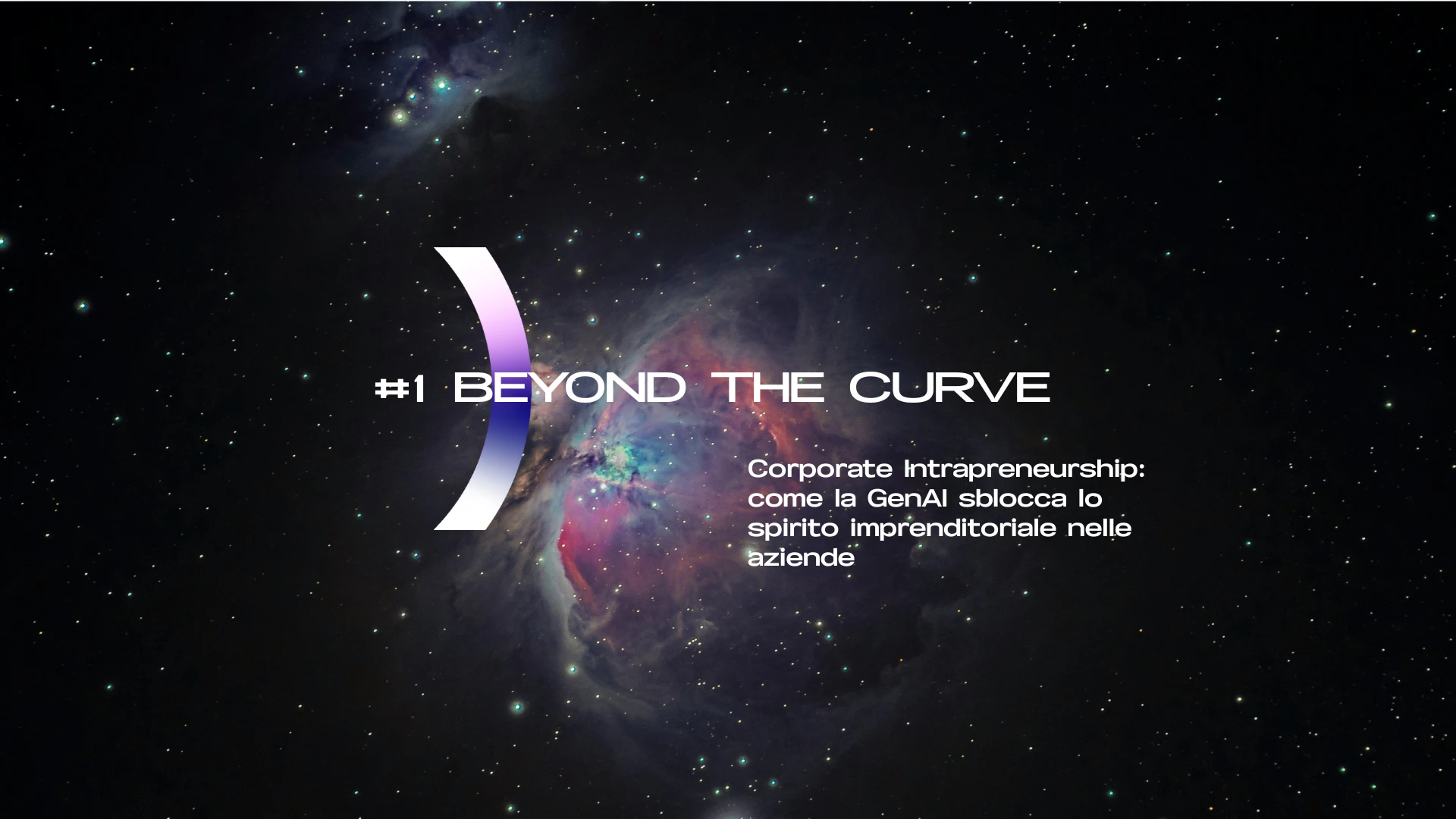


.
.
.
.
.
.
.
.
.
"Beyond the Curve" is an invitation to push past the traditional boundaries of innovation, exploring ideas, technologies, and strategies that redefine what’s possible. Every month, Zest Innovation’s newsletter serves as a compass to navigate the ever-evolving landscape of Open Innovation, delivering exclusive insights, emerging trends, and success stories shaping the future. It’s a true radar for those who aim not only to anticipate change but to lead it with vision and awareness.
Discover the first issue now and start looking beyond the curve!
How will the Corporate Intrapreneurship model evolve with the power of Generative AI? Artificial intelligence can enhance efficiency, objectivity, and precision in analytical phases, while creativity, experimentation, and market interaction will continue to thrive through human intelligence.
A Legacy of Intrapreneurship
The concept of intrapreneurship dates back to 1978, when students Gifford and Elizabeth Pinchot, while attending the School for Entrepreneurs in Tarrytown (New York), wrote a paper reflecting on the idea of the intra-corporate entrepreneur.
A few years later, in 1985, economist Norman Macrae credited Gifford Pinchot as the inventor of the term "intrapreneur" in an article for The Economist. This recognition led to the widespread adoption of the concept, further popularized by Pinchot’s book Intrapreneuring: Why You Don’t Have to Leave the Corporation to Become an Entrepreneur, which remains a bestseller to this day. In a recorded lecture from a few years ago, Gifford Pinchot himself explains what intrapreneurship is and why it is crucial for companies.
Why the Phenomenon is Gaining Momentum Again
The resurgence of intrapreneurship in recent years is largely driven by the urgent need for continuous innovation across industries. Another key factor? The arrival of Millennials and Gen Z in the workforce. Unlike previous generations, they refuse to settle for static or conventional roles. Instead, they seek to be key players in their careers, creating tangible impact through their work.
Some choose to fulfill these ambitions by launching startups—or at the very least, working in one. Others aim to achieve similar goals while remaining within existing companies, leveraging available resources and infrastructure to innovate from within.
The intrapreneur movement has grown significantly, especially in regions like the U.S. and Canada, to the point of becoming a global movement.
The League of Intrapreneurs is a worldwide community dedicated to sharing experiences and resources, strengthening the culture, and
fostering a belief that intrapreneurs are essential in transforming companies “from the inside out” and guiding them toward a new economic paradigm.
The Rise of Generative AI
November 30, 2022, marked a turning point: the launch of ChatGPT. For innovation leaders, this event introduced a crucial challenge of integrating AI into corporate processes and transformation programs practically and effectively.
In just over a year, it has become clear that Generative AI is a game-changer in corporate innovation. This technology has demonstrated its ability to optimize processes, cut costs, and significantly enhance the quality of projects developed within organizations.
A Practical Example
Internal corporate innovation programs - Corporate Intrapreneurship - are a prime use case for Generative AI. These programs are designed to cultivate both an innovative mindset and practical skills among employees. Traditionally, the early stages of an innovation project require extensive analytical and research work, such as market opportunity assessment, competitor analysis, and business model definition.
With Generative AI, these tasks can be automated, freeing up valuable time to focus on experimentation and execution. For example, creating a Lean Business Model Canvas - an effort that typically takes days - can be significantly accelerated with AI-powered real-time analysis and suggestions. Similarly, when exploring alternative solutions or new approaches, AI acts as a catalyst, generating innovative ideas that teams can refine and implement.
By shifting focus from tedious research tasks to high-value activities like customer engagement and market feedback analysis, AI enables faster iterations and better market alignment.
Efficiency and Scalability
Another major advantage of AI is its ability to scale innovation programs. By reducing project execution time, companies can involve a larger number of participants without increasing costs. This not only broadens the reach of innovation culture but also enhances the overall quality of the projects being developed.
This dynamic can be illustrated with a sports analogy: innovation should be like a tennis match, where the game only ends when one player reaches the required score to win. This contrasts with the traditional corporate approach, which resembles a soccer match limited to a fixed 90-minute timeframe. With AI, we move closer to the tennis model, achieving better results within the same timeframe and continuously refining projects through iteration.
While AI cannot guarantee the success of every innovation initiative, it can ensure that the best possible outcomes are achieved within a given timeframe.
Toward a New Paradigm: From Single Programs to Continuous Processes
Looking ahead, we envision innovation programs evolving into fully integrated corporate processes. In this model, every employee would have the opportunity to propose and develop innovative ideas at any time without waiting for a designated corporate call for ideas. AI could support this shift by providing tools for content generation, idea evaluation, and access to existing corporate knowledge.
Such a transformation would make corporate entrepreneurship far more dynamic and pervasive, enabling proactive employee participation while reducing the costs associated with structured innovation programs.
Generative AI is not merely a tool for process optimization it’s a catalyst for structural change, redefining how companies nurture innovation. By adopting this technology, businesses can create more efficient, inclusive, and results-driven innovation programs, paving the way for a future where innovation is no longer an isolated initiative but a continuous, company-wide practice.
The first issue of “Beyond The Curve” is brought to you by Zest Innovation in collaboration with aipermind.